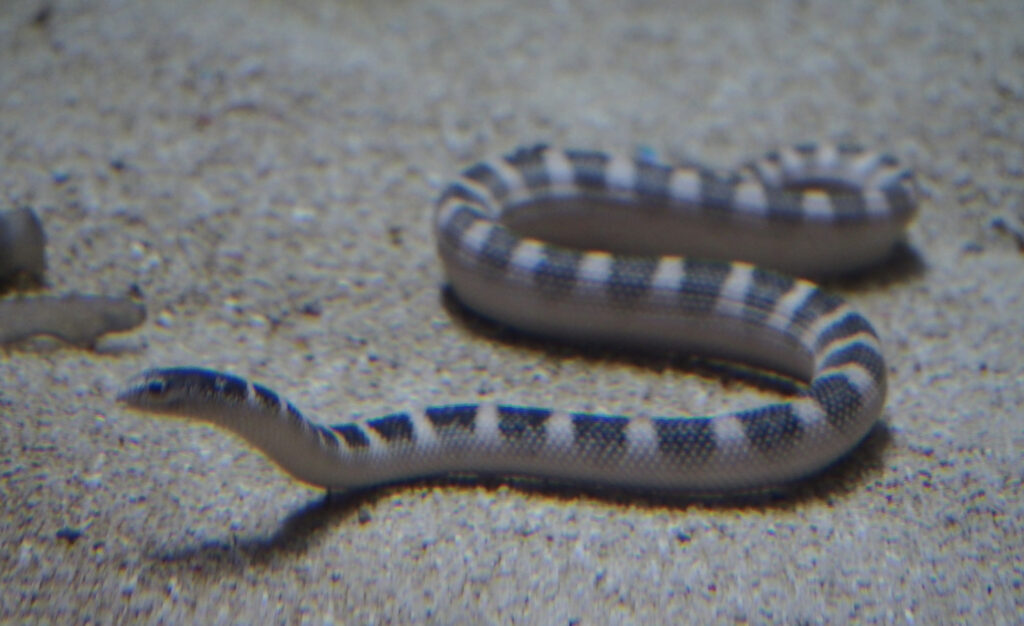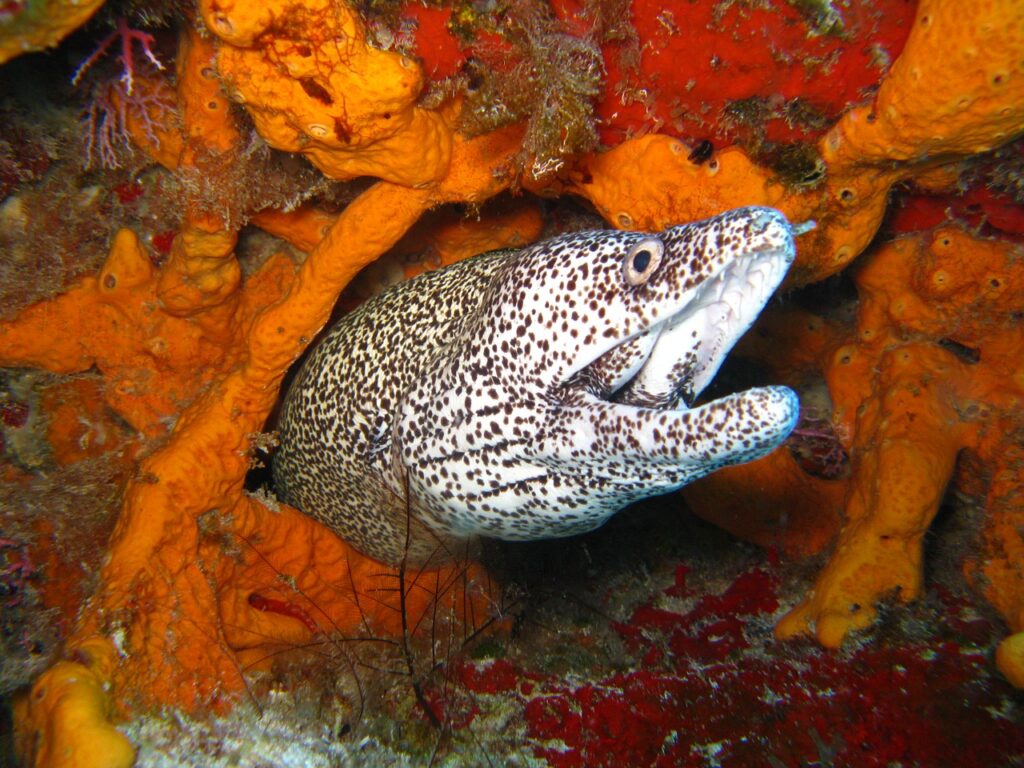DIFFERENCES BETWEEN EELS AND SEA SNAKES
Of course, there are other evolutionary and biological reasons for such a phenomenon. In the world of animals, it is quite common to encounter entirely different species sharing the same physical characteristics. Among insects and reptiles, for example, species that belong to the lower tiers of the food chain would adopt the traits of their predators to protect them from being hunted.
Eels and sea snakes are examples of how two completely different animals may share the same overt traits. At first glance, one would have a difficult time distinguishing eels and sea snakes. Both have serpentine qualities. In addition, they tend to share the same habitat. But eels and sea snakes are completely different.
So, what are the differences between eels and sea snakes?
1. SIZE
Eels are physically recognizable due to their snakelike bodies and movement. On average, a mature eel can reach 70 cm in length. The American eel is approximately 50 cm long. In comparison, the European eel can reach a maximum length of 80 cm. The short-finned eel is about 90 cm long. Finally, the Japanese eel can be as long as 100 cm. Depending on the variety, eels can be between 1 ounce to 55 pounds in weight.
Mature sea snakes can be between 120 to 150 cm in length. Sea snakes are quite light in terms of weight since they tip the scales at around 3 pounds.
2. APPEARANCE
Although there are some pronounced differences between and among eel species, they generally share the same flattened shape compared to the cylindrical bodies of sea snakes. Eels have smaller scales that contribute to their smooth and sleek appearance. Most eel varieties have a drab or gray color that allows them to blend well with water environments. Eels resemble flexible swords cutting through the water. Their heads are more elongated and sharp. Because eels are fishes, they also have fins. These fins run from the back of their heads and run across the back. They also have fins on the bottom part of their bodies.

It shares the cylindrical shape common to all snakes. The head and the tail tip are flat to allow them to swim more efficiently in water because they do not have the fins typical for fish. Most varieties of sea snakes resemble segmented ropes when viewed. Snakes have a much more prominent presence in the water due to their relatively vibrant colors. Their bright coloration is typical for predators and is used to ward off potential threats.

3. HABITAT
Eels thrive in both freshwater and saltwater environments. They can be found in shallow streams, silted rivers, marine estuaries, and coastlines. Most eels are catadromous, meaning they seasonally migrate from upland freshwater down to seas and oceans. Since eels are bottom feeders, they make their homes in enclosed spaces such as rock caves, plant masses, mud tunnels, and other similar shelters. During the colder months, they tend to retreat under the mud and hibernate.
Sea snakes are saltwater animals. They are found primarily in tropical seas and oceans, making their dwellings in the coral reefs. They are found in the Pacific Ocean, the Indian Ocean, and the great waters of Oceania. They are not found in the Atlantic Ocean, where the currents tend to be colder. Unlike eels which can thrive in deeper water, sea snakes are mostly confined along shallow coastal waters.
4. DIET
Eels are predominantly nocturnal predators who rely mostly on their keen sense of smell. The rich ecosystem in freshwaters and marine waters provides them with an abundant source of food. Eels feed on small fish, frogs, snails, small crustaceans, insect larvae, and worms. Interestingly, they tend to eat only twice or three times a week.
Sea snakes subsist on small fish, young squids, fish eggs, and crustaceans. Because they share the same natural habitat as eels, they would also supplement their usual dietary preferences with eel.
5. BEHAVIOR
Sea snakes possess venom that can potentially kill. Despite this, they are generally shy and will bite only as a last resort when threatened. They use their venom primarily for immobilizing prey. They are casually handled by fishermen who often find them caught in their fishing nets. In these encounters, it is rarely reported that sea snakes bite fishermen, resulting in grave injury or even death. Because they are quite used in marine environments, they often become disoriented when they are on land. They are much more aggressive when they are outside the water. It is interesting to note that sea snakes cannot similarly coil themselves to their land-based relatives.
Eels are not venomous. They can be very aggressive when they feel harassed. But when they are threatened, they can deliver a nasty bite. The moray eel is relatively dealt with caution because it possesses a powerful set of jaws and rows of sharp jagged teeth, which it utilizes to restrain prey and deliver a very painful bite.
6. HUMAN INTERACTION
Eels are sometimes kept as aquarium pets. But it’s quite difficult, expensive, and time-consuming to care for an eel. They tend to be very picky about their living arrangements. If they are not content with the size of their tanks, they become quite reclusive. They may even refuse to feed. The eel that is captured in the wild or farmed in a semi-wild setup is processed as food. American eels are smoked or grilled. They are valued for their flavorful and clean-tasting meat.
Deep-sea divers often encounter sea serpents. They are among the colorful animals that are seen in coral reefs. They are quite shy or mild-tempered and are generally tolerant of divers who venture into their spaces. Fishermen who fish in deep waters also encounter sea snakes frequently caught accidentally in their nets. They have no problem handling sea snakes which are more eager to slither back into the water instead of biting the hand that frees them. Sea snakes are not kept as pets.
7. EVOLUTION
Eels evolved some 3.5 million years ago; the ancestors of the modern-day eels can be traced back to the Eocene period. The point of origin for eels is believed to be in the western regions of the Pacific Ocean.
Sea snakes are a venomous variety of snakes, along with the cobra, the mamba, and the rattlesnake. They have significantly evolved to adapt to living underwater some 15 million years ago.
QUESTIONS ABOUT EELS AND SEA SNAKES
HOW ARE EELS PROCESSED AND EATEN?
Eels are common fixtures in Japanese cuisine, where they are referred to as “unagi”. Their oiliness and fat content are sought after. Eels are also very popular in Chinese cuisine. Unlike other fish, which may be served raw as sushi or sashimi, eel is always cooked. This is because the eel’s blood is toxic and requires proper preparation and cooking to neutralize in the United States and Europe. Eel is considered a delicacy. They are rinsed and scraped to rid them of their sliminess. Then they are rinsed thoroughly and dried for about two hours; They are frequently served grilled. Eels are also smoked for about three hours to enhance their fishy flavor and aroma.
ARE SEA SNAKES EDIBLE?
Yes, but not as frequently as one expects. Sea snakes are edible in the same way snakes are edible. But generally, they are rarely eaten either as delicacies or in extreme survival situations. They are not as valued as food in the same manner as eels.
HOW VENOMOUS ARE SEA SNAKES?
Yes, they are venomous. The beaked sea snake is notorious in that its venom is more potent than the venom of a king cobra. Fortunately, they are not as aggressive as some terrestrial relatives, such as the black mamba.
IS THE ELECTRIC EEL A TRUE EEL?
No. Electric eels may look like eels, but they are more related to catfish. There are no electric eels in seas and oceans; Their habitat is mostly confined to the forest rivers and freshwaters of South America. Mature eels can generate about 600 volts of electricity, But even though this can be very painful, there are very few casualties due to electrocution. Deaths attributed to electric eels are mostly due to cardiac arrests caused by the shock of the encounter or drowning due to being incapacitated by the electric shock.
ASIDE FROM SEA SNAKES, ARE THERE OTHER SNAKES THAT CAN LIVE IN WATER?
Two types of snakes can thrive in the water aside from sea snakes. These are the water moccasin and the water snake. Water snakes are found in plant matter and debris near marshes, ponds, and rivers. Water moccasins can be found in small creeks, swamps, stagnant streams, and shallow lakes. Water moccasins are venomous. They are non-venomous, but they can deliver a painful bite when threatened.

